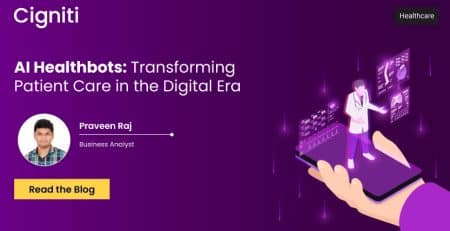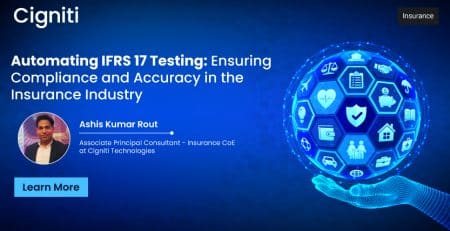The Evolution of Test Automation with GenAI: Trends and Implications
|
Listen on the go!
|
The software testing lifecycle (STLC) is undergoing a significant transformation, driven by the advent of Generative AI (GenAI). As the NelsonHall November 2024 Quality Engineering Market Assessment highlights, GenAI represents a paradigm shift, blending intelligence with automation to redefine how organizations approach test automation. This integration is about enhancing accuracy and streamlining workflows to deliver faster, cost-effective outcomes.
Current Landscape of Test Automation
For decades, test automation relied heavily on manual scripting and machine learning (ML)- -based tools. While these methods improved efficiency compared to traditional testing approaches, they required significant time and expertise. GenAI changes this equation by automating previously manual tasks such as script generation, test case creation, and requirement analysis.
According to the report, many organizations now leverage GenAI to generate user stories and test cases directly from production logs, drastically reducing the time needed for development cycles. This is particularly beneficial for projects with tight deadlines, such as cloud migrations or SaaS platform updates. The ability to reverse-engineer artifacts has also proven invaluable for enterprises grappling with legacy systems, offering a bridge between traditional practices and modern requirements.
Critical Trends in GenAI Adoption
1. Expansion to Brownfield Projects
While GenAI initially gained traction in greenfield projects, where new test cases and scripts were generated from scratch, its deployment is expanding into brownfield environments. In these scenarios, organizations use GenAI to improve existing test assets, reverse-engineering scripts into test cases, and update outdated models. NelsonHall notes that this capability is handy for enterprises navigating hybrid environments where legacy systems coexist with modern platforms.
2. Integration with Model-Based Testing (MBT)
Model-Based Testing (MBT) has faced challenges due to the complexity of creating and maintaining test models. GenAI offers a solution by automating the creation and updating of these models, making MBT a more viable option for organizations. The report highlights how GenAI simplifies processes by reverse-engineering models from existing test cases, enabling teams to adopt MBT without the traditionally required resource-intensive overhead.
3. Bundling with Other Technologies
GenAI is increasingly paired with ML and Natural Language Processing (NLP) to test ecosystems comprehensively. For instance, while GenAI generates test cases, ML can be used for impact analysis or self-healing, ensuring test scripts remain accurate. This bundling promises robust solutions that address the entire STLC, making GenAI a catalyst for next-generation test ecosystems.
4. Regional Uptake and Industry Leadership
NelsonHall predicts North America and the UK will lead the adoption of GenAI by 2025. This shift is driven by increased business confidence and economic recovery in these regions, especially in financial services and high-tech industries. GenAI adoption is expected to increase as organizations in these sectors rebound, setting benchmarks for others to follow.
Challenges and Considerations
1. Cost and Expertise
Despite its potential to lower long-term costs, GenAI requires significant upfront investment. Organizations must budget for advanced tools and the upskilling of their workforce. The NelsonHall report emphasizes that while many vendors are working to democratize GenAI through tool accessibility, enterprises still face challenges acquiring the expertise needed to maximize its benefits.
2. Accuracy vs. Speed
While GenAI accelerates processes, its models might lack the precision of well-trained ML systems in specific contexts. Organizations must weigh the benefits of speed against the potential risks of lower accuracy, particularly in compliance-heavy industries where precision is critical.
Future Outlook
As predicted in NelsonHall’s comprehensive analysis, GenAI is poised to dominate test automation by 2028. Its impact will extend beyond cost savings to reshape how testing is approached. One of its most transformative features is its ability to democratize advanced tools, making them accessible even to teams with limited technical expertise.
Democratization of Tools
By automating tasks like test script creation and defect categorization, GenAI empowers non-technical teams to participate in testing. This shift reduces the dependency on centralized testing organizations and enables agile teams to integrate testing seamlessly into their workflows.
Greenfield to Brownfield Transition
As GenAI matures, its role in transitioning from greenfield to brownfield applications will expand. The report highlights use cases such as generating test artifacts from production logs or legacy systems, offering organizations a way to modernize without discarding existing investments.
Broader Industry Impacts
GenAI’s influence will likely extend beyond traditional testing boundaries. For example, user acceptance testing (UAT) is expected to be enhanced by identifying frequently used transactions and automating test scenarios. This expansion into UAT and other areas underscores GenAI’s potential to unify testing, development, and maintenance processes.
Closing Thoughts
The evolution of test automation with GenAI signifies more than just technological advancement; it represents a strategic shift in how organizations approach quality engineering. By reducing reliance on manual effort, integrating seamlessly with other AI technologies, and opening doors to underutilized testing methodologies like MBT, GenAI positions itself as the linchpin of modern testing ecosystems.
As NelsonHall’s report illustrates, organizations that embrace GenAI will enhance their testing capabilities and future-proof their operations for tomorrow’s complexities. Whether tackling legacy systems or scaling cloud migrations, GenAI offers a roadmap to agility, efficiency, and innovation.





Leave a Reply